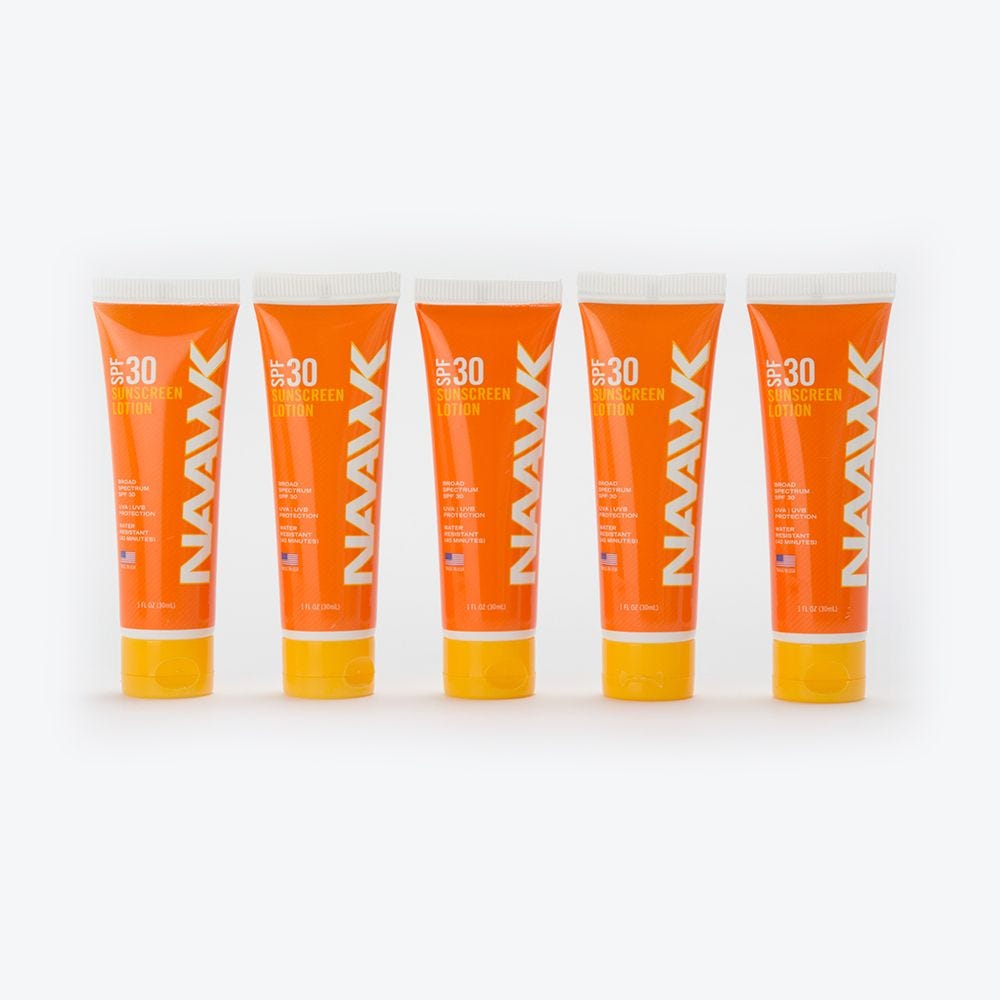Sun Protection in the Winter
Don't stow away the sunscreen
Warm weather has come and gone
and, with it, most people stow away their swimsuits, shorts, Hawaiian shirts, barbecues, and sunscreen. But wait…don’t hastily put that sunscreen away, because you can sunburn and get sun damaged skin all year round.
It is easy to assume that we are safe from the harmful effects of the sun if it is cloudy, rainy, snowy, or cold. Most people associate sunscreen with the clear sunny skies of summer months or spring break trips to the beach. However, protecting your skin from UV rays is important even in the winter months, because exposed skin is at risk even if it is cloudy, rainy, cold, or snowy. It seems counter intuitive to use sunscreen if you can’t see the sun. Turns out, though, clouds mostly block sunlight, not harmful ultraviolet (UV) rays that increase our risk of getting skin cancer and accelerate the skin aging process. In fact, clouds only block around 20 percent of UV rays according to the Environmental Protection Agency (EPA). Said differently, we are exposed to 80 percent of UV ray intensity on cloudy days compared to the UV ray intensity on a clear and sunny day. That’s still a lot, especially at higher altitudes where the UV intensity is even greater!
You might think: “it’s winter and I tend to spend a lot of my time indoors so I don’t need to worry about wearing sunscreen, cloudy or sunny”. Unfortunately, we aren’t completely protected from exposure to harmful UV rays even indoors or in your car. According to the Skin Cancer Foundation, 50 percent of harmful UVA rays can pass through windows and 60 percent can pass through car windows.
Whether it is sunny or cloudy, you are indoors or outdoors, or the season is summer or winter, make sure to apply an SPF-30 (or more), broad-spectrum sunscreen to protect your skin from harmful UV rays!
Here are some additional helpful tips to help you better protect your skin year round:
No sun? No sunscreen, right? Unless it is in the dark hours of the day, any daylight carries the risk of harmful UV rays.
Going skiing, snowshoeing, hiking, or sledding in the snow? Weather conditions like snow on the ground actually increase your vulnerability to sun exposure by reflecting incoming UV rays back on to you. That means you get almost twice the exposure while out in wintertime. Put on some sunscreen before you head out and carry a lightweight pouch to reapply on longer outings.
When is the best time for outside activities? If possible, it is best to avoid the peak hours when the sun’s UV rays are strongest. That means planning your activities before 11am and after 3pm, especially during Daylight Savings Time.
Are you an athlete? Taking care of your skin can actually improve recovery from hard efforts. If you just finished up a huge day on the bike or a really long run, but came away with a massive sun burn, your body’s ability to recover from training is compromised if it also has to recover from a healing sun burn. More specifically, sunburns can dehydrate you, which can cause blood vessels to dilate so your skin receives more blood than usual and your recovering muscles receive less (see skincancer.org).
What kind of sunscreen should I use? While there are a lot of daily foundations, face moisturizers, or body lotions that have SPF in them, cosmetic products typically don’t act as UV defenders if you are outside for the day. Look for “broad spectrum”, “UVA and UVB protection”, and higher than SPF-30.


